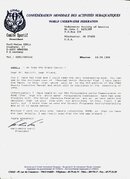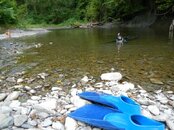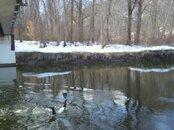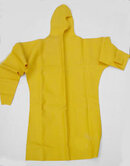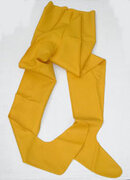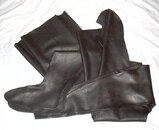Hi David,As a lifetime snorkeller who swims in the chilly North Sea off the North East coast of England, I also think that the prospect of exotic flora and fauna can be overrated and they certainly don't represent a necessity for me when snorkelling. Your "pen-portrait" of river snorkelling is most eloquent. Have you ever come across a book entitled "We Swam the Grand Canyon: The True Story of a Cheap Vacation That Got a Little Out of Hand" by Bill Beer?

Here's a "Publisher's Weekly" summary:
April 10, 1955: the water temperature was 51F, and a fierce wind buffeted two men as they entered the Colorado River at Lees Ferry. The author and John Daggett had set out to swim the river through the Grand Canyon. At a time when fewer than 200 people had run the river in boats, this was daredeviltryand illegal. Their equipment was primitive: Army-surplus rubber boxes to carry gear, thin rubber shirts, woollen long johns and swim fins; they also took a movie camera to record the adventure. Twenty-six days and 280 miles later, bruised and battered, they left the river at Pierce Ferry. Beer relives the miseries and exhilaration of that singular journey, a gripping story of endurance. In an afterword, he discusses other, legal trips through the Grand Canyon (he has swum the occasional rapid from a boat) and assesses the present state of the environment; he has high praise for the Park Service. This will appeal to readers who enjoy adventure.
Here in Europe, a new water sports activity is evolving in the form of "swimtrekking", which in the Mediterranean means swimming from island to island with the aid of masks, fins and snorkels. There are "wildswimmers" here too, who regularly swim outdoors in rivers, lakes and seas, some opting to swim bareskinned, others with wetsuits. I see both as an exciting development and snorkelling can only benefit as a pursuit when it's recognised as a way of swimming on the surface from A to B as well as an activity involving submersion. Snorkelling offers the best of both worlds, the one beneath the waves and the other from the water surface to the skies.
Thanks again for starting this thread!
This is a fun topic, and one which I have used for many years now. When I lived in Roseburg, Oregon I swam in the Winchester Reservoir, and had a route that I swam. I was at one point the Finswimming Director of the Underwater Society of America, and we popularized finswimming as a sport. Open water finswimming is what I did there in the 1980s and 1990s, and it was better for me than running (and safer than bicycling--I'm right now recovering from a bicycle spill today, no serious injury, but scary). I used long finswimming fins, and then my own version of fin I call the Scoop Fin.
But that's not why I write here. I also found this book, We SWAM the Grand Canyon, The True Story of a Cheap Vacation that Got a Little Out of Hand by Bill Beer. But since I was Finswimming Director of USA, I had some contacts. I wrote the President of the World Underwater Federation, CMAS (Confederation Mondaile Des Activities Subaquatciques), Karl-Heinz Keril, and sent him a copy of the book. He wrote the enclosed letter back, and credited Bill Beer and John Daggett with a "Special World - Record":
Ultra Grand Fond / Ultra Long Distance
Eaux libres / Open Water
Far etapes
450 Km Colorado River (Grand Canyon) Lees Ferry - Pierce Ferry
............White Water Finsmwimming, Water Temp. 10 degrees--13 degrees C
............Bill BEER and John DAGGETT 1955 April 10th - May 25th
............Livre/book: Bill BEER: "We Swam the Grand Canyon".
............ISBN 0-39386-151-9. Seattle 1988
This world record is unlikely to ever be repeated, as there are now dams along some of this stretch of the Colorado River, from what I've heard. My brother took an 11 day boat trip down the Colorado in the Grand Canyon this list summer, and at one point was tossed out of the raft by one of the rapids (he went through in his life jacket). But he had a wonderful trip. Now, imagine doing that by swimming...
Enjoy, SeaRat
Attachments
Last edited:




